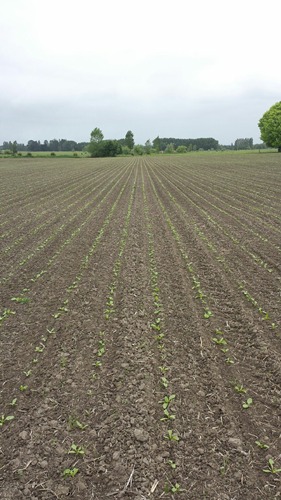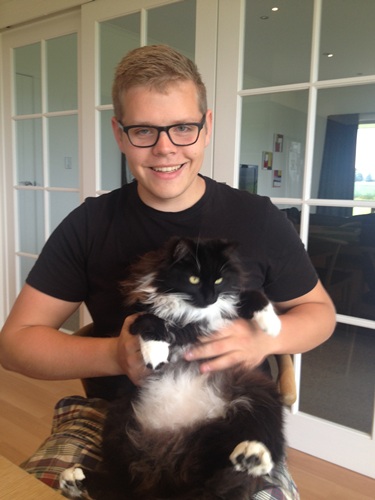Photo competition winner decided!By the time this newsletter arrives at your door the prizewinner for the photo competition will have been announced and someone will be the lucky winner of a free trip to Grasslands 2014.
Some consolation awards are on offer as well — these winners will be advised before we send out their prizes. We will include the full list of winners in the Autumn 2014 edition of Grass & Grit. In the meantime we share a few entries in this edition to demonstrate the quality we have been receiving.
|
|
Seasons greetings
Most of the country has experienced an easy winter and rains to date over most of the country have been quite acceptable — grass growth has generally been quite phenomenal so it appears the stars are aligning for us to enjoy a bountiful 2014. And anyway, how bad can it be? The All Blacks remain undefeated, Xero has rocked the accounting world and Lorde is rocking the international music industry. So we will go out of 2013 with a smile.
The Tulloch team would like to take this opportunity to thank customers and dealers for their continued support and wish everyone a very happy Christmas and a prosperous 2014.
Silly Season Contact
Just a reminder of our 24/7 service number. If you need to get assistance for a machine break-down you can contact us on 0800 tulloch, i.e. 0800 88 55 624Krone fine-tunes its forager market targeting
Krone has launched a new range of forage harvesters to take a greater share of the forager market.
Half the world’s forage harvester market lies in the 451hp to 550hp range, so Krone has introduced two new models of Big X in that sector: the Big X 480 and Big X 580.This is one of the strategies behind that big new assembly line we showed Krone building in our Spring newsletter. The new line doubles the company’s forage harvester production capacity.
Key features of the new Big X range include a narrower cutting cylinder that allows a smaller frame. The benefit of this is a transport width of three metres with 710/70 R42 front tyres, reduced overall weight, and rear vision over the engine bay from the cab, which is not possible on current models.
Other features like easier access for servicing, easier header coupling and reduced service points all help to make the forager more user-friendly. Power comes from a Tier 4 MTU in-line 6-cylinder engine mounted laterally to provide direct drive.
The introduction of a 6-row maize header also broadens the scope of possible customers for the new range of harvesters.
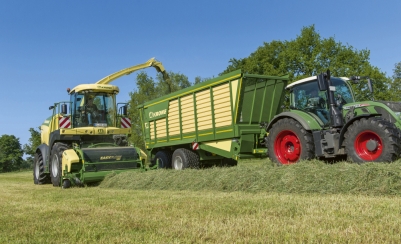
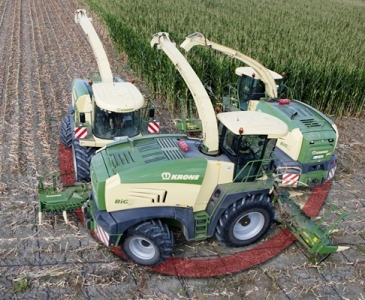
New Sky Drills
We have a new range of drills available from Sky Agriculture, two models of which arrive in February in time for field days — a 4m folding Easy Drill (a direct drill) with fertiliser and 4m folding Maxi Drill (mulch drill) with fertiliser.The Sky factory is on the west coast of France just north of Nantes. Sky Agriculture is a specialist that manufactures only seed drills and disc harrows.
The Easy Drill direct drill range includes 3m rigid and 4m rigid box-type drills and 4m and 6m folding air seeders. All four models can be configured with fertiliser. Disc pressure is 250kg and row spacing at 6”. The Maxi Drill mulch drill range covers a rigid 3m model with or without fertiliser, as well as 4m and 6m models, each with or without fertiliser and 3m transport width.
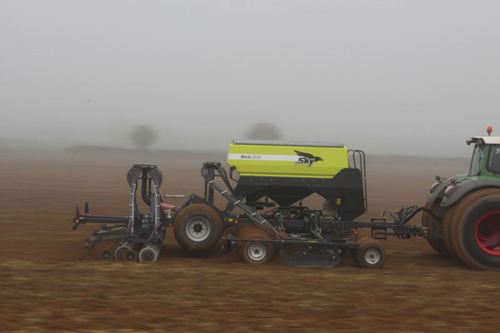
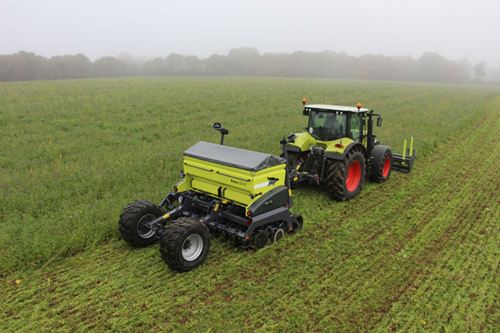
Awesome fodder beet planting with Monosem
This photo was taken 13 November. The fodder beet was planted on 19 October near Onga Onga, Central Hawkes Bay, at a population of 100,000/ha with a Monosem NGPlu4 planter with Pro wheel. Owner-operator Charlie says he has achieved even better results than shown in this pic.Strip tillage needs a closer look
We have previously reported on Strip Tillage and its inherent benefits, one of which is combating soil erosion.The photo here illustrates what happens when water gets moving. This paddock was strip-tilled with an Orthman 6 row 1tRIPr Strip Tiller and then the rain came down, a nearby river overflowed and washed out. If this paddock had been conventionally tilled, the result would have been far more catastrophic. Just to put things in perspective check out the 1.5L coke bottle in the trench. A rough calculation indicates that the soil lost per hectare is 1200 cubic metres.
While the powers that be scrap over “who done it”, what to call “it” and what needs to be done to stop it (global warming, that is), farmers are able to adapt and innovate. Amongst other tools, strip tillage where practicable is one we can use to play our part.
The writer’s opinion is that no matter what we do, we will not be able to alter the course of Mother Nature to suit our desired requirements or even maintain a weather pattern that, during our very brief existence on the planet, we consider to be normal. It is interesting to note that a recent study presents strong evidence from a group of Scientists from Washington University Missouri that volcanic activity under the Antarctic ice sheet is partly to blame for the accelerated shrinking of the southern polar ice cap. Charles Darwin proved the theory of evolution and we are the best of all species at it, so we should soldier on.
Strip-till evaluation is ongoing. The Orthman has performed well and when in ideal conditions cannot be matched for cost-effective crop establishment. The machine is robust and certainly has a place in New Zealand. With the ability to adapt row spacings from 20” upwards the Orthman can till a number of crops including fodder beet, sweet corn, maize and beans.
The Oekosem ROTOR-strip tiller has also performed well despite the fact that there was no prior knowledge here of its capabilities. Designed specifically for row crops into pasture, it has worked well and the crops are up and flourishing.
The Oekosem has four shanks that penetrate to 250mm below the surface. A rotary tiller is incorporated in the design such that pairs of “L” shaped blades facing in toward each other each with a shank between do the tilling. A heavy steel roller follows. Fertiliser is applied in front of each tiller row and a 4-row Monosem NGPlus4 planter was mounted directly onto the back of the strip tiller. The Oekosem originates from Switzerland where farmers have been practising strip tillage since the mid-1980s.
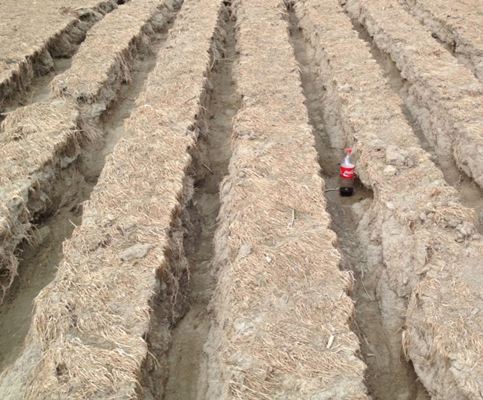
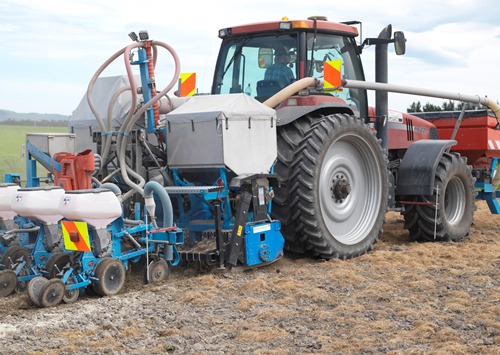
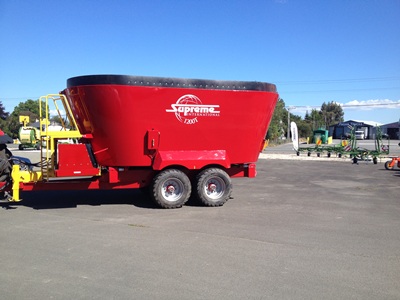 Supreme
Supreme
We have just completed assembly of the largest Supreme imported into New Zealand. The Supreme 1200T with the rubber extension has a capacity of 30.4m3 and is destined for a customer in the Manawatu.A little bit of history - pit silage from conventional bales
Some sixty years ago New Zealand farmers were, like others around the world, looking at reducing the cost of feed.
Pits were used for making grass silage, a relatively new feed concept at the time, and pickup balers were making hay bales, improving on the quality and cost of hay from a haystack.
There was sufficient evidence to prove consolidation was important to produce good quality silage. However good quality silage had a few drawbacks, the worst of which was dealing with feedout time. As those out there old enough to know will know, the worst task on the farm was getting into a silage pit with a silage knife to hack out the day’s ration.
The capability of the modern pickup baler was, for some innovators, food for thought. From 1950 farmers in the UK had been working with International Harvester Company and the model B-45 pickup baler. If it would bale silage, the material would thus be consolidated — and if the string stayed intact throughout the ensiling process, there were easily measurable parcels of feed that could be readily extracted from the pit.
News of this arrived in New Zealand and in 1952 the experiments began. Graeme and Dave Tulloch tried the concept with a New Holland 76 pickup baler in a 5-acre paddock of rye and clover at East Taratahi in the Wairarapa.
The baler was modified for the job. Firstly the bale size needed to be short enough to produce a bale that was easily manhandled — about 60lb. Aside from other minor changes to the baler to achieve optimum output, the mower needed to be fitted with a second swath board to present a tighter row that afforded a better crop flow into the baler.
The bales were then stacked in the pit. Productivity in the paddock was about 150 bales per hour in a 5–6 ton/acre crop. The understanding of the time was that heat was the key to the ensiling process so after a day’s work the temperature at the base was checked and when it was about 40 ° –45 ° C the next paddock could be cut, baled and layered.
Finally the stack was covered with sacks and a layer of lime. Graeme reckons the high moisture content meant the bales probably weighed in at about 80lbs and the job of filling the pit/stack was so laborious that the concept was abandoned.
Business @ Tulloch Farm Machines
Anna back
We are pleased to report that Anna Tulloch has returned from her OE to rejoin the Tulloch team during the silly season. Energetic and enthusiastic, Anna is taking some clerical work off Alan in the workshops in addition to her assisting again in her past roles in Administration and Marketing.Visitor from Germany
Marius Boesch from Germany lived with the Tulloch family while he worked at Tulloch Farm Machines on his recent three-month visit. He primarily worked on updating the website, www.tulloch.co.nz, and helped out with other marketing and admin sectors too. As you can see from the photo, he loved the Tulloch household cats and dogs — he was very tempted to see if they would all fit in his suitcase to take back home! Marius is now back home and ready to start training with Krone next year to become a procurement officer. We wish him all the best.
Parts extension
The construction of our new parts storage building (pic filename: Parts foundation) is coming on and we look forward to its final implementation further enhancing our dealer network backup.Consumables going well
Our second season selling consumables has been successful. We never had any intention of going hammer and tongs at it, and the opportunity was simply put before all the dealers, but those who chose to come on board have been pleasantly surprised with the interest from their customers. Other than minor handling damage the products have performed well and customers are happy.

.png)



 1
1 2
2 3
3